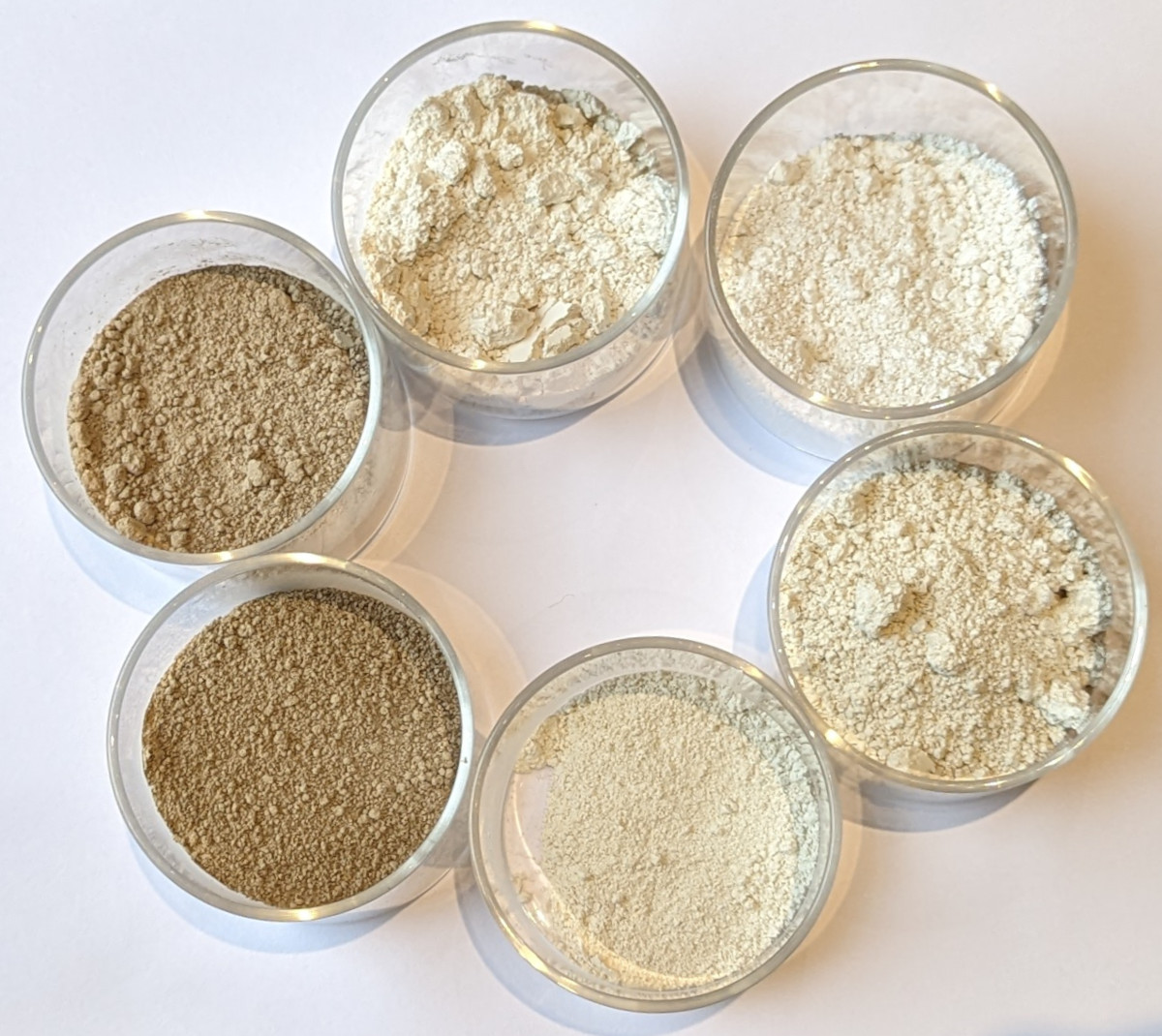The different colours of diatomaceous earth.

Diatomaceous earth, DE or diatomite is a naturally occurring soft sedimentary rock made up of tiny fossilised diatoms, plankton when they were alive, that have accumulated over millions of years in fresh water lakes.
This fine powder is made up of the fossilised microscopic skeletal remains of hard shelled algae called diatoms.
What colour is DE powder?
Diatomaceous earth looks like a superfine powder that be any colour from pure white, through cream to light brown or even light Gray.
Silica deposits are mined and used to make diatomaceous earth products.
There are three grades of diatomaceous earth:
- Feed grade is certified for use in animal and human foods and is required to be tested for heavy metals and other contaminants.
- Food grade can be used in filtering or processing of food but is not allowed in the final product.
- Pool grade is bright white and has been heat treated for use in filters.
Each type must be tested as it has a set of specifications that must be met before it is classified.
What is the difference between red and white diatomaceous earth?
The red or darker coloured diatomaceous earth contains calcium montmorillonite, sometimes called calcium bentonite or bentonite clay which occurs naturally in the deposits that are extracted.
Below: A video showing the different colours of the 6 types of diatomaceous earth I tested.
White contains only diatomaceous earth with no or very few other minerals to change the colour.
Does the colour of diatomaceous earth matter?
In my testing the colour of diatomaceous earth had no effect of the efficacy, either when used as a feed additive or a pest killer.
All 6 of the DE products we tested were different colours and they all worked equally well.
